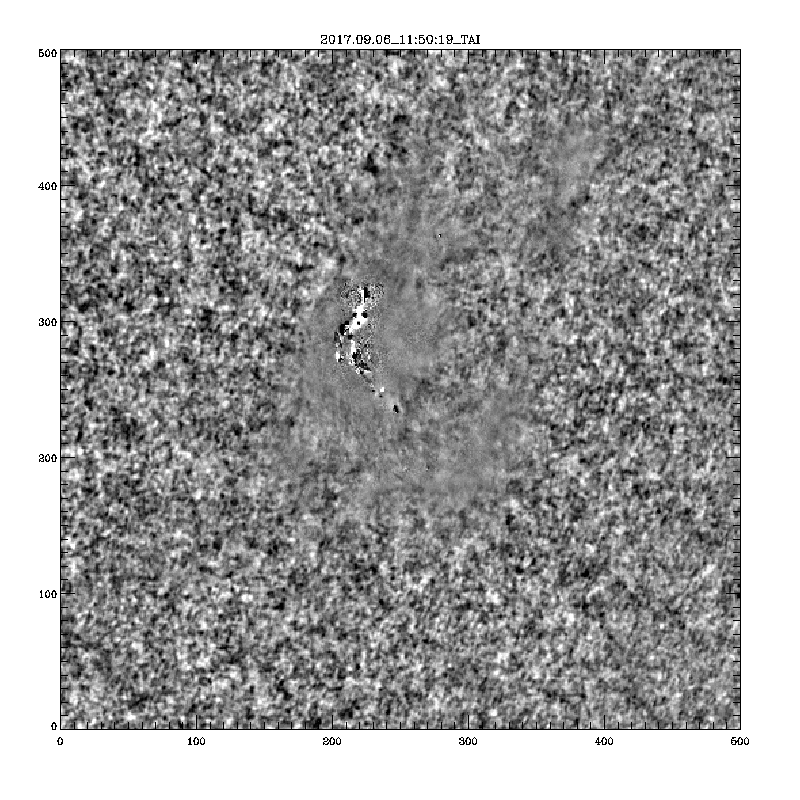Alexander Kosovichev
Department of Physics, New Jersey Institute of Technology, Newark, NJ07102
A powerful impact on the surface of Sun caused by the flare explosion excited helioseismic acoustic waves that travel through the solar interior and after reflection displayed a set of wave ripples on the surface. Such events are called “sunquakes” (Ref. 1). The sunquake ripples are usually observed 15-20 min after the impact, when the seismic acoustic waves emerge on the surface after reflection from the high-temperature interior layers of the Sun. This time delay depends on the wave speed beneath the surface. Sunquakes were excited by the X9.3 flare that occurred in AR 12673 on September 6, 2017. The unusual feature of this event was that initially the flare impact excited several relatively small sunquake waves, and then a much large wave traveling to much longer distances from the flare impact.
Figure 1| Left image shows the light-of-sight magnetogram taken at the beginning of the flare by the SDO/HMI instrument. White and black colors correspond to positive and negative magnetic polarities. Right image shows the flare impact on the solar surface (the filtered Dopplergram difference). The flare impact is located along the magnetic field polarity inversion line.
The sunquake images displayed in Figures 1 and 2 are obtained from Dopplergram observed by the HMI instrument on Solar Dynamics Observatory. The Dopplergrams are processed using a Fourier-transform filter centered at 6 mHz to isolate the wave signal from the convective noise. The convective noise is still prominent outside the sunspot regions. The images in Figures 1 (left) and 2 show the running difference of the filtered Dopplergrams, and represent the velocity variations on the surface with the amplitude of +/- 200 m/sec.
Figure 2| Left image shows the sunquake ripples observed about 30 min after the flare impact. They have an elongated elliptical waveform. Right image shows the sunquake ripples about 50 min after the impact. They represent large-scale seismic acoustic waves that travel to much longer distances than the waves shown in the right image.
The flare impact was located almost precisely along the magnetic field polarity inversion line (Fig. 1). It is detected in the Dopplergrams as high-amplitude signal (white and black ribbon in the right panel) which saturated the standard HMI calibration procedure. Figure 2 shows the seismic wavefronts observed 30 min (left) and 50 min (right) after the impact. The first wavefront has an elliptical shape reflecting the elongated structure of the impact source. The sunquake waves of this type are typically observed in seismically active flares. The second wavefront moving south-west has a large-scale circular structure and much longer wavelength. This type of sunquakes is unusual, and is, probably, caused by a different type of flare impact. This issue requires a careful investigation. At this point, we can only speculate that the first sunquake was caused by energetic particles, and the second one was initiated by retarding force of plasma eruption or by some other large-scale force.
The following is an animated GIF movie. For a better quality movie, please click here .

References
[1] Kosovichev, A. G. & Zharkova, V. V., 1998, Nature, 393, 317
